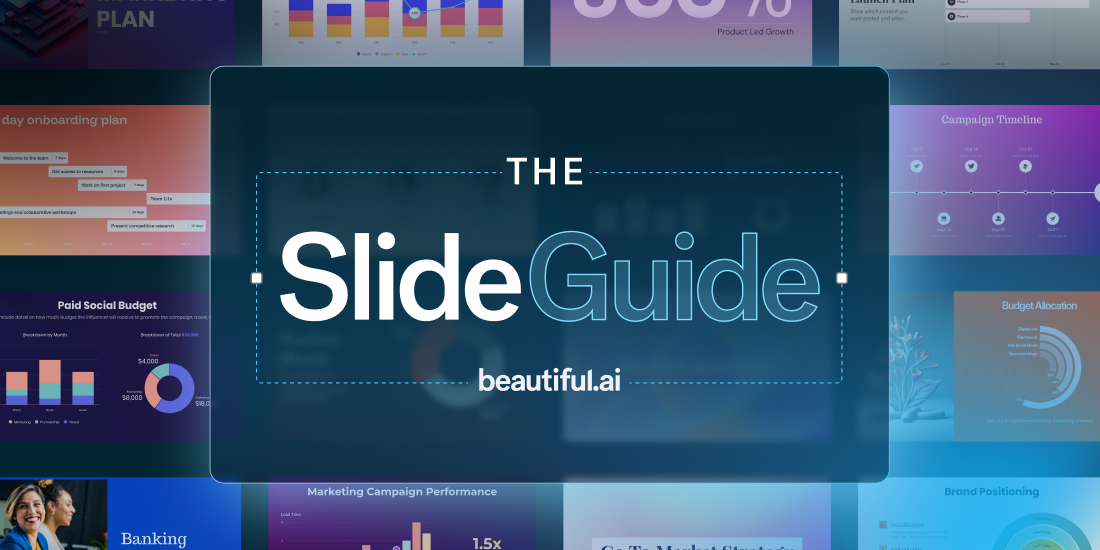
Choosing the right color scheme for your presentation can make the difference between a forgettable deck and one that captivates your audience. Colors set the mood, guide the eye, and reinforce your message. But picking the perfect palette can feel overwhelming. The good news is that a bit of color strategy (and a few smart tools) can simplify the process dramatically.
1. Start with your brand
Your brand should always be your starting point when selecting a color scheme. Consistent use of brand colors strengthens recognition and builds trust regardless of whether you’re presenting to clients, investors, or internal teams. If your organization already has established brand guidelines, lean on those as your foundation.
Use your primary brand color as the anchor for your presentation, then introduce one or two complementary tones to provide balance and flexibility. If your brand palette feels limited, consider using lighter or darker variations of your main colors for backgrounds, charts, and accents.
Not tied to a specific brand? Choose colors that reflect your personal or professional identity. Think about how you want your audience to feel— confident, inspired, calm, or energized—and let those emotions guide your palette.
2. Use color psychology to strengthen your message
Colors evoke emotions and associations, often subconsciously. Understanding the basics of color psychology can help you choose hues that reinforce your story.
- Blue communicates trust, calm, and professionalism — ideal for business or technology topics.
- Green suggests growth, balance, and sustainability.
- Red conveys urgency, passion, or power (but use sparingly to avoid fatigue).
- Yellow inspires optimism and creativity but can be overwhelming in large areas.
- Gray and black signal sophistication, while white promotes cleanliness and focus.
Aim for a palette that reflects your brand’s tone or the message you want to leave behind.
3. Keep contrast and readability in mind
Even the most beautiful palette fails if your audience can’t read your slides. Always ensure sufficient contrast between background and text. White or light backgrounds with dark text are easiest to read on screens, while dark backgrounds can create drama for bold visuals or large displays.
If you’re unsure, test your slides on different screens or projectors. What looks great on your monitor may lose clarity in a conference room.
4. Use fewer colors, more intentionally
A clean presentation usually sticks to three to five colors:
- One dominant color (often the background)
- One or two secondary colors for contrast or emphasis
- One accent color to draw attention to key points
Too many colors can feel chaotic, especially if slides vary from one to the next. Consistency across your deck builds professionalism and visual flow.
5. Lean on templates and smart design tools
You don’t have to be a designer to get color right. Platforms like Beautiful.ai take the guesswork out of design decisions. With customizable themes, you set your color, fonts, logos and styling once and it’s automatically applied across every slide. Themes paired with Smart Slide layouts help ensure consistency, readability, and style with zero manual tweaking.
Whether you start with your brand palette or one of Beautiful.ai’s preset color themes, you can create visually stunning slides that feel intentional and balanced in minutes.
6. Test and iterate
Once you’ve picked your colors, step back and view your presentation as a whole. Do the colors guide attention effectively? Does the tone fit your audience and purpose? If something feels off, try subtle adjustments like a softer background tone or a less saturated accent.

.png)





